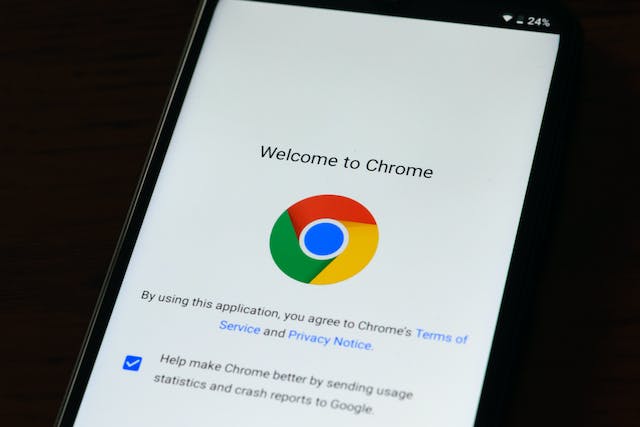Protecting customer privacy and data is paramount for businesses. Companies must prioritize the safeguarding of sensitive information to maintain trust and comply with privacy laws. This blog delves into the importance of data protection, strategies for maintaining privacy, and answers common questions about corporate responsibilities in customer data privacy protection.
Protecting customer data
Ensuring the privacy of customer data is a critical responsibility for businesses. With increasing incidents of data breaches, it’s vital to implement data protection measures. Customer data encompasses a wide range of information, including names, addresses, contact details, payment information, and purchasing history. This data is highly valuable, making it a prime target for cybercriminals. Therefore, businesses must implement strong data protection protocols such as encryption, secure storage solutions, and strict access controls. These measures are not only technical but also cultural. Employees must be educated and regularly trained on the importance of data privacy and the role they play in maintaining it.
Adhering to privacy laws is another crucial aspect of protecting customer privacy. Regulations like the General Data Protection Regulation (GDPR) and the California Consumer Privacy Act (CCPA) set stringent standards for data protection and grant customers significant rights over their personal information. Compliance with these laws is mandatory, and non-compliance can result in severe penalties. Additionally, protecting personal information involves safeguarding any data that can identify an individual, including sensitive data like social security numbers and financial records. Ensuring this level of protection requires constant vigilance and updating security practices to address new threats.
Understanding customer data
To effectively protect customer data, businesses must first understand what constitutes customer data and the best practices for data protection. Customer data refers to all information provided by customers, which ranges from basic contact details to more sensitive data like purchase history and payment methods. The protection of this data is critical for maintaining and building customer trust and complying with data privacy regulatory requirements.
Effective data protection strategies include regular security audits to identify potential vulnerabilities, continuous employee training on data protection practices, and the implementation of advanced cybersecurity technologies like firewalls and intrusion detection systems. By understanding the scope and sensitivity of customer data, businesses can better tailor their protection measures to safeguard this vital information.
Why is protecting customer data important?
Protecting customer data is not just a legal requirement but also a cornerstone of maintaining customer trust and business and brand reputation. The loss or theft of customer data can lead to significant financial and reputational damage, which can be devastating for any business. Implementing secure data protection measures helps prevent data breaches and ensures that customer information remains secure. This, in turn, helps maintain customer trust, as clients feel more confident that their personal information is being handled responsibly.
Compliance with privacy laws is not optional. These regulations are designed to protect consumer rights and personal information, and failing to adhere to them can result in severe financial penalties and legal repercussions. Safeguarding personal information is also essential to prevent identity theft and fraud, which can have devastating consequences for individuals. Thus, protecting customer data is not just about avoiding penalties but also about upholding ethical standards and building a trustworthy relationship with customers.
How do you protect customer confidential information?
Protecting customer confidential information requires an approach that includes both technical solutions and policy implementations. Ensuring that all customer data is encrypted and stored securely is fundamental. This involves using strong encryption protocols for data both in transit and at rest. Additionally, implementing strong authentication methods, such as multi-factor authentication, helps control access to sensitive information and ensures that only authorized personnel can access it.
Developing and communicating a clear privacy policy is another crucial step. This policy should outline how customer data is collected, used, and protected. It should be easily accessible to customers and written in clear, understandable language. Regularly updating security protocols to address emerging threats is also essential. Cybersecurity is a constantly evolving field, and businesses must stay ahead of new threats to effectively protect personal information. By combining these technical measures with a strong privacy policy, businesses can create a framework for protecting customers’ confidential information.
Protecting customer data: Best practices
- Data encryption is a critical first step. Encrypting data both in transit and at rest using strong encryption protocols such as TLS/SSL ensures that information is protected whether it’s being transmitted over networks or stored on servers. End-to-end encryption, which ensures data is encrypted from the point of capture to its final destination, provides an additional layer of security.
- Access controls are another essential component. Implementing Role-Based Access Control (RBAC) limits data access based on employees’ roles within the organization, ensuring that only authorized personnel can access sensitive information. Additionally, requiring multi-factor authentication (MFA) provides an extra layer of security by requiring multiple forms of verification before granting access.
- Conducting regular security audits is vital for identifying and rectifying vulnerabilities in your systems. Security audits, combined with penetration testing by external experts, can simulate cyber-attacks to test your defenses and ensure your systems are resilient against potential threats.
- Data minimization practices should be adopted to limit the collection of personal data to what is strictly necessary for business purposes. Whenever possible, anonymizing or pseudonymizing data can significantly reduce risks associated with data breaches.
- Employee training and awareness programs are crucial for maintaining a culture of security within the organization. Regular training sessions on data protection policies and best practices, along with phishing simulations, can raise awareness and improve employees’ responses to potential threats.
- Implementing privacy policies and procedures is essential. A clear data privacy policy that outlines how customer data is collected, used, and protected should be developed and communicated to all stakeholders. Additionally, having an incident response plan allows for quick and effective action in the event of a data breach or security incident.
- Leveraging advanced security technologies can greatly enhance data protection. Intrusion Detection Systems (IDS) monitor network traffic for suspicious activity, while firewalls and up-to-date anti-malware software protect against various cyber threats.
- Compliance with privacy regulations such as GDPR, CCPA, and HIPAA is non-negotiable. Adhering to these regulations ensures that data protection standards are met and maintained. It’s also important to respect and facilitate the rights of data subjects, such as their right to access, rectify, or delete their data.
- Data backup and disaster recovery plans are essential for ensuring business continuity. Regularly backing up critical data and storing it securely, along with maintaining a disaster recovery plan, can mitigate the impact of data loss or breaches.
- Consent and preference management platforms support data protection by ensuring clear communication and obtaining explicit consent from customers before collecting and using their data. These platforms allow customers to manage their preferences, giving them control over their personal information.
- Continuous monitoring and improvement of security measures are necessary to keep up with evolving threats. Implementing continuous monitoring of systems and networks enables real-time detection and response to threats, while regularly updating security practices ensure they remain effective.
- Finally, managing third-party risks is crucial. Evaluating the data protection practices of vendors and partners and securing contracts that include stringent data protection requirements can prevent vulnerabilities from external sources.
How to handle consumer privacy concerns
Addressing consumer privacy concerns effectively can help build trust and loyalty among customers. Being transparent about the types of data you collect and how it is used is key to handling privacy concerns. Customers should be informed about what data is being collected, the purpose of the collection, and how long the data will be retained. Offering customers control over their data preferences, such as the ability to opt out of certain data collections or to delete their data, can also help alleviate concerns.
Ensuring compliance with data privacy laws is another crucial aspect of handling consumer privacy concerns. Informing customers about their rights under these regulations and how the company complies with them can provide additional reassurance. Implementing strong data privacy measures and being responsive to customer inquiries demonstrates a commitment to protecting their data. This proactive approach can help build a positive relationship with customers and show that their privacy is a top priority for the business.
How Consent and Preference Management Platforms can support customer data protection
Consent and preference management platforms support businesses in managing customer consents and preferences regarding their data, ensuring compliance with privacy laws and enhancing customer trust.
Benefits of Consent and Preference Management Platforms:
Transparency and trust
Consent and preference management platforms play a pivotal role in building transparency and trust between businesses and their customers. By clearly communicating how customer data will be used and obtaining explicit consent, these platforms ensure that customers are well-informed about the data practices of the business. This transparency fosters trust, as customers appreciate knowing that their preferences are respected and that they have control over their personal information. When customers feel confident that their data is being handled responsibly, they are more likely to engage positively with the business.
Regulatory compliance
One of the significant advantages of consent and preference management platforms is their ability to help businesses comply with stringent data privacy regulations such as the General Data Protection Regulation (GDPR) and the California Consumer Privacy Act (CCPA). These platforms maintain detailed records of customer consent and provide mechanisms for customers to manage their data preferences. This not only helps businesses avoid legal penalties associated with non-compliance but also enhances the company’s reputation for respecting privacy and protecting consumer rights.
Data accuracy and relevance
When customers actively manage their data preferences, businesses can ensure that the data they hold is accurate and relevant. Consent and preference management platforms allow customers to update their preferences and information as needed, leading to cleaner, more reliable data. This improved data quality enhances the effectiveness of customer interactions and enables businesses to develop more personalized and targeted marketing strategies. Accurate data ensures that marketing efforts are directed at the right audience, improving engagement and conversion rates.
Efficiency in managing preferences
Automating the process of consent and preference management significantly reduces the administrative burden on businesses. These platforms streamline the process of collecting, storing, and updating customer preferences, minimizing the risk of errors and ensuring consistency across all touchpoints. Automation also allows businesses to quickly adapt to changes in customer preferences or regulatory requirements, maintaining an agile and responsive data management approach.
Enhanced security
Consent and preference management platforms often come equipped with advanced security features designed to protect the data they handle. These security measures include encryption, access controls, and regular security audits to prevent unauthorized access and data breaches. By incorporating these security features, businesses add an additional layer of protection to customer information, further safeguarding against potential cyber threats. This enhanced security not only protects sensitive data but also reassures customers that their personal information is being securely managed.
FAQs of corporate responsibilities in customer data privacy protection
-
What protects a consumer's privacy?
- Consumer privacy is protected by a combination of legal, technical, and organizational measures. Companies must secure customer data through encryption, access controls, and regular security audits. Legal measures, such as compliance with privacy laws, provide a framework for protecting consumer privacy. Organizational measures, such as employee training and the development of a strong privacy culture, also play a crucial role. A clear and comprehensive privacy policy helps ensure that customers understand their rights and how their data is protected. By combining these measures, companies can create a framework for protecting consumer privacy.
-
How do you protect customer confidential information?
- Protecting customer confidential information involves several key practices. Implementing cybersecurity measures, including firewalls, intrusion detection systems, and regular security updates, is essential. These measures help prevent unauthorized access to customer data and protect against cyber threats. Educating employees about the importance of data privacy and enforcing strict access controls are also crucial. Employees should be aware of the company's data protection policies and trained on how to handle sensitive information securely. By combining technical measures with strong organizational practices, businesses can effectively protect customer confidential information.
-
How would you protect your customers' privacy?
- Protecting customer privacy requires ongoing efforts and a proactive approach. Conducting regular risk assessments to identify and mitigate potential threats to customer data is essential. These assessments help identify vulnerabilities in the company's data protection measures and provide a basis for improving them. Maintaining an up-to-date privacy policy that reflects current best practices and regulatory requirements is also crucial. This policy should be regularly reviewed and updated to ensure it remains effective in protecting customer data. Utilizing consent and preference management platforms can further support these efforts by ensuring that customer preferences are respected and that data usage complies with regulatory standards.
-
What steps can businesses take to prevent data breaches?
-
Businesses can take several proactive steps to prevent data breaches:
- Implement strong authentication: Use multi-factor authentication to ensure that only authorized personnel can access sensitive data.
- Regular security audits: Conduct regular security audits to identify and address potential system vulnerabilities.
- Data encryption: Encrypt data both in transit and at rest to protect it from unauthorized access.
- Employee training: Continuously educate employees about the importance of data security and the best practices for protecting customer information.
- Update software regularly: Keep all software and systems up to date to protect against known vulnerabilities.
- Incident response plan: Develop and maintain an incident response plan to quickly address any data breaches or security incidents.
-
Businesses can take several proactive steps to prevent data breaches:

Download A buyer’s guide to Consent Management Platforms
Selecting the right Consent Management Platform (CMP) involves a thorough evaluation of your organization’s technology, goals, and processes. By asking the right questions during the selection process, you can ensure your business invests in a CMP that meets your needs and maximizes value. Our guide covers all the crucial areas to consider, including:
- Scoping an initial roadmap of requirements
- Key questions to ask internal stakeholders and potential vendors
- Four steps to assess and compare vendors
Discover how to make an informed choice and find the perfect CMP for your organization.

